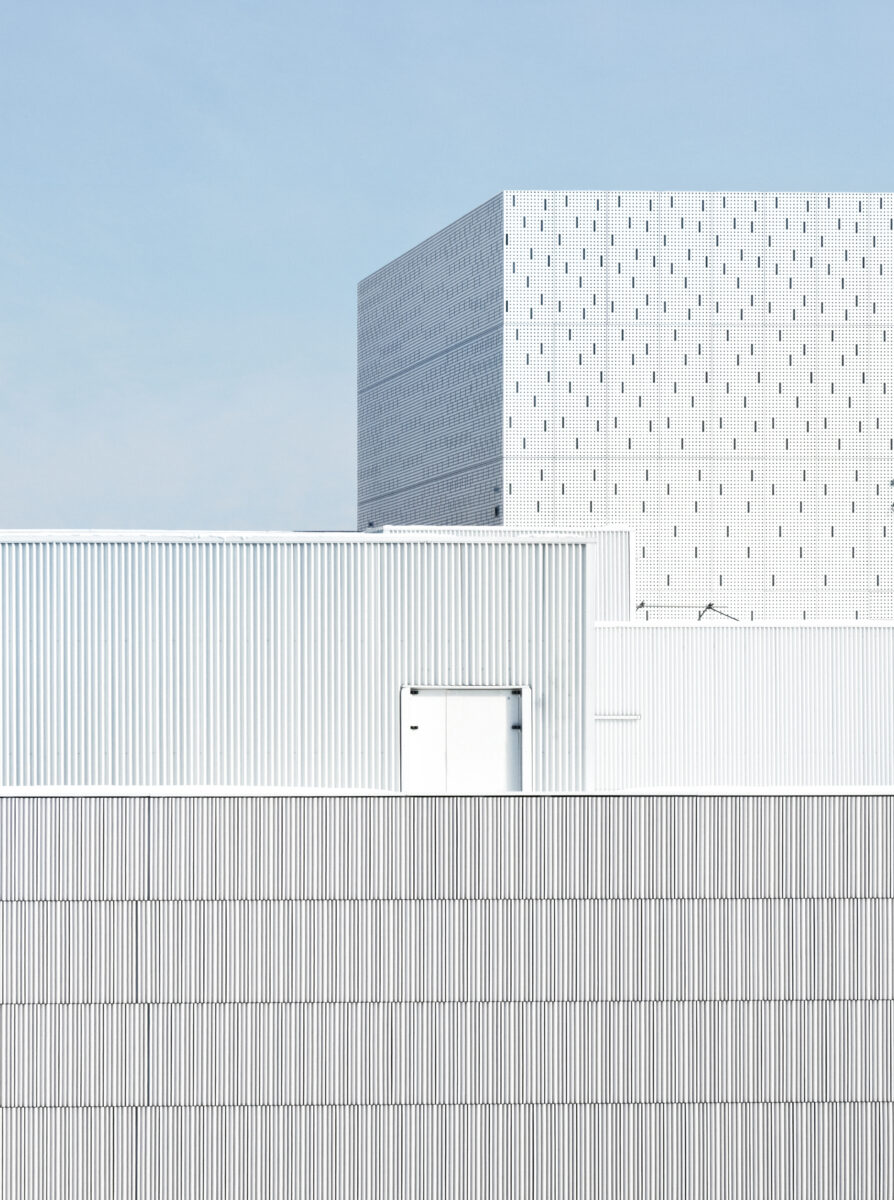
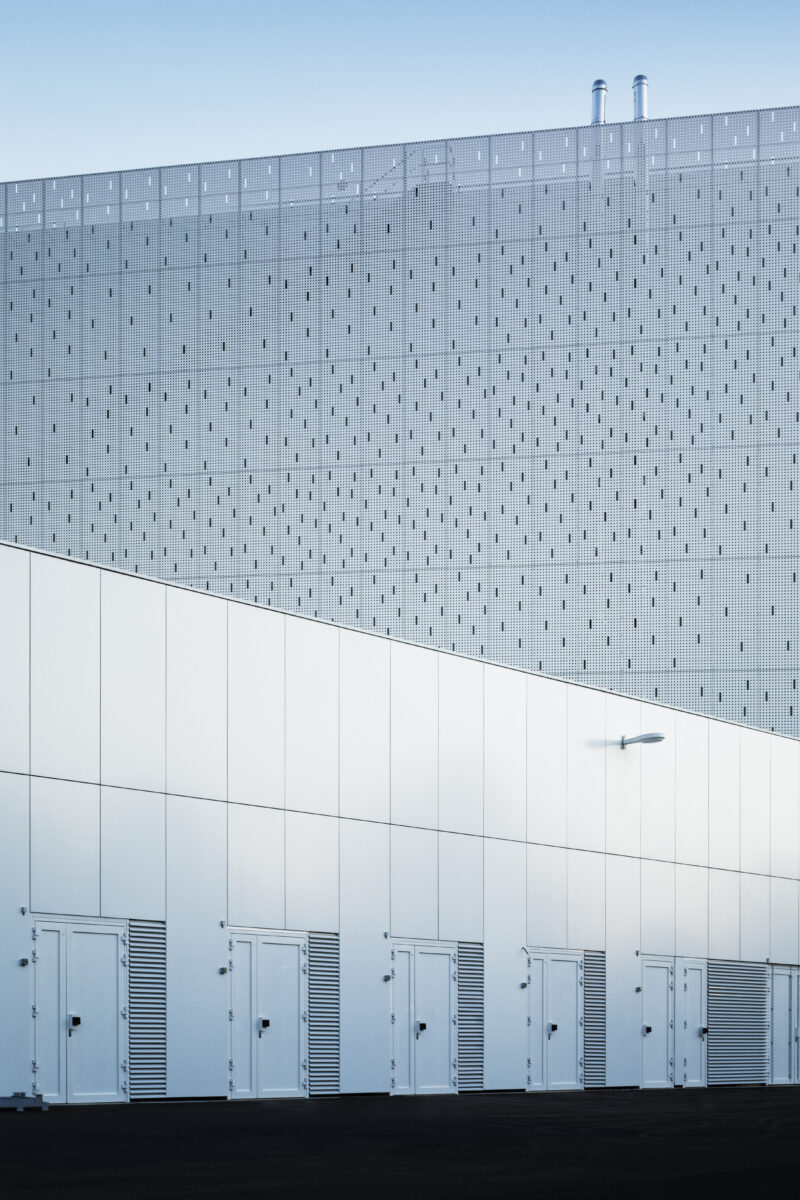
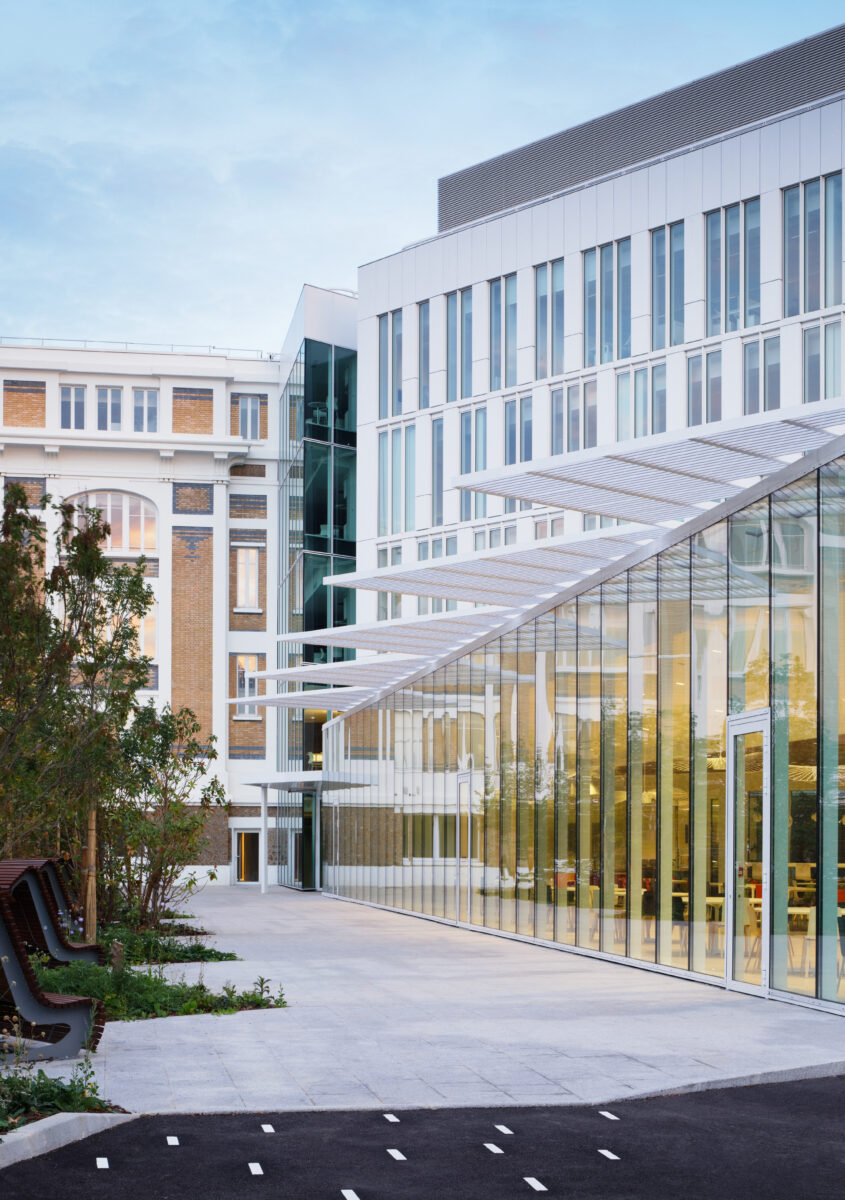
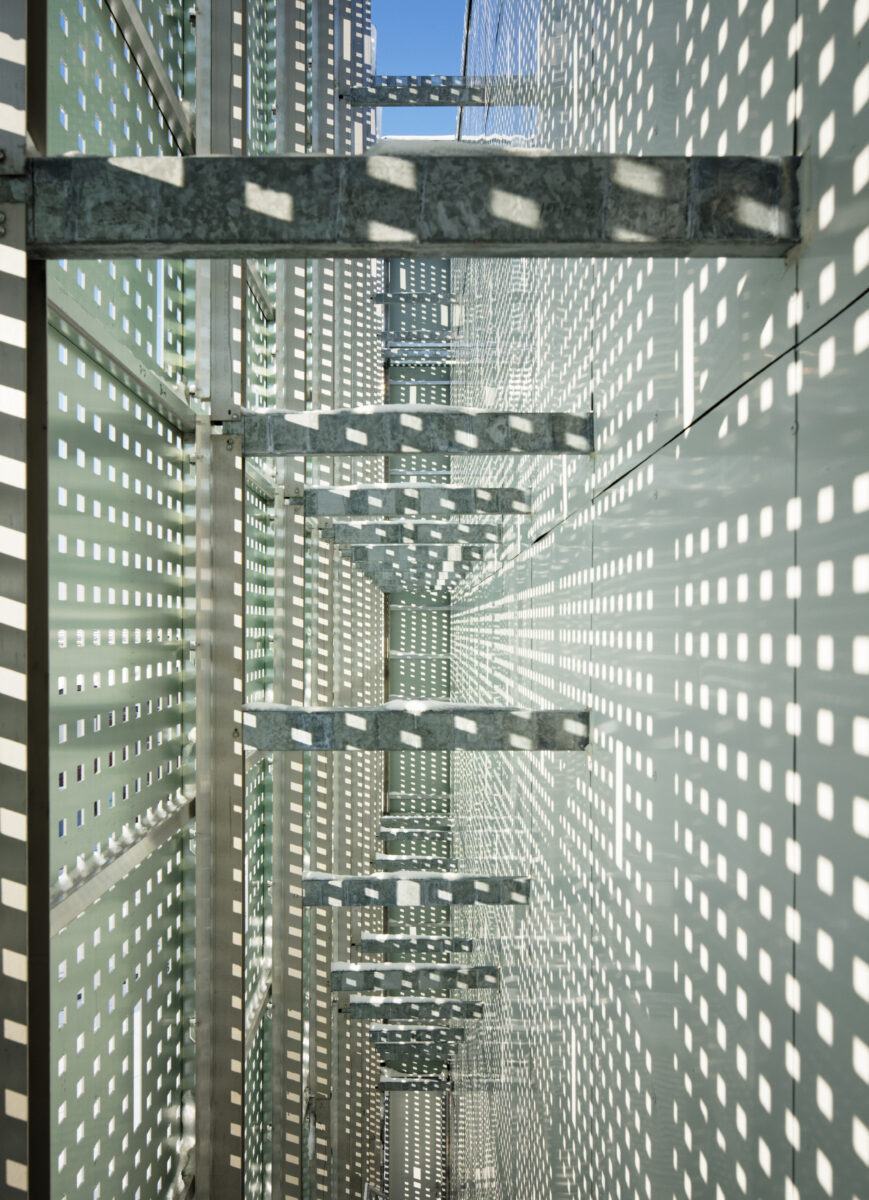
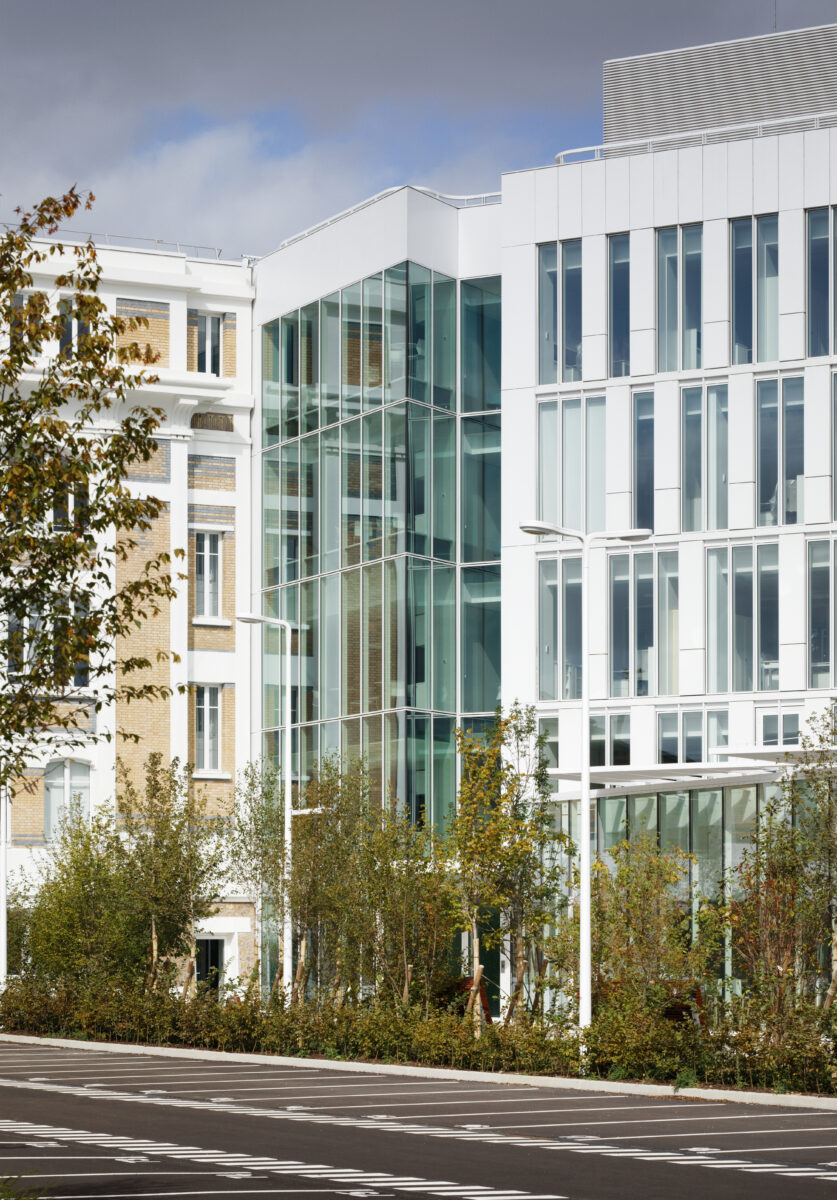
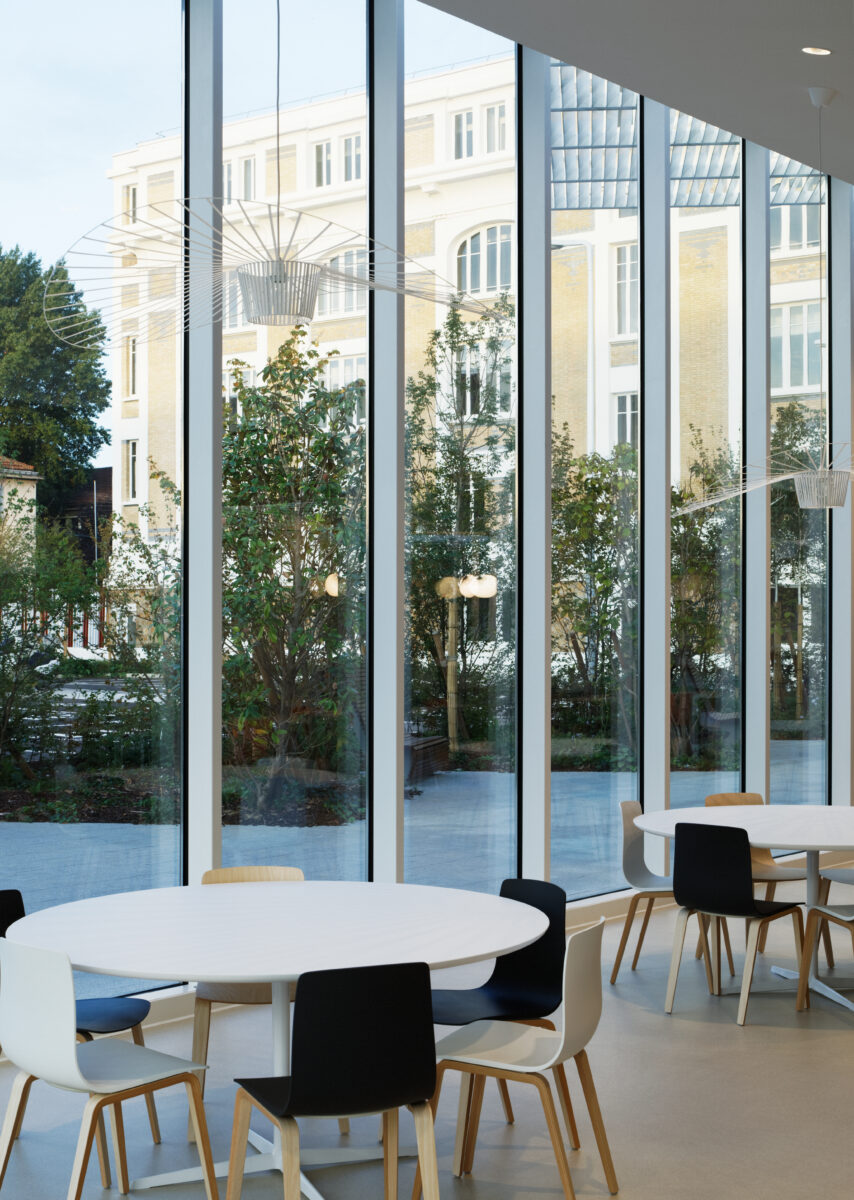






Europe’s second-biggest cash handling facility, the site rises on the 4.5 ha wasteland of the former Babcock steel factory along the A86 motorway. This project reflects the challenge of the “Grand Paris” and the major changes happening north of the French capital. The opening of the Banque de France is the sign of renewal for the industrial site and for the entire area, bringing an added cultural value to the latter while preserving its industrial past.
In order to process over 1 billion banknotes (25% of the national reserves) at the opening date, this project involves a specific material and technological infrastructure suited for highly secured and automated facilities.
The nerve center of this architectural plan is a safe composed of three juxtaposed cubic volumes. Its main function is the high-speed automated control of banknotes. It is designed to automatically destroy worn-out banknotes and put aside the ones deemed suspicious. Its secondary function is the storage of the banknotes in the 26-meter high safe.
Natural light is at the heart of the project, adding to a building conceived to be perfectly airtight. The white ceramic facade presents an alternated hollow pattern that softens the building’s defensive appearance and creates a vibration depending on the amount of sunlight. This attachment to natural light is also demonstrated inside the building where a triangular void was turned into a planted patio open to the staff.
At the entrance of the complex, two former Babcock Wilcox buildings, dating back to 1923 for the brick one and 1987 for the concrete one, face the safe. These two units have been restored and organically connected to one another to be reborn as a unified office building that will be open to the public.
Contractor
VIGUIER architecture urbanisme paysage
Appointed contractor, engineering and process
Artelia
Engineering firms
Axeflow (Process)
Alternative (Acoustique)
Construction firms
Léon Grosse (entreprise générale bâtiment tertiaire)
CBC (Gros œuvre et second œuvre)
Ineo (CFO et CFA)
Spie (CVC plomberie)
Jean Lefebvre (VRD et espaces verts)
Landscape
Agence Babylone
Interior design
Majorelle (space planning)
Suppliers
Céramique extrudée (entreprise Moeding) et cassettes métalliques comme revêtement de façade
Certifications
NF HQE Bâtiments tertiaires par Certivéa avec « Plateforme logistique durable » 3* par Afilog
Partner/Leading architect
Christophe Charon
Francesco Paolo Zaccaro
Operation architect
Fiona Dunlop
Dionisio Rocha
Project team
Christophe Charon
Beat Meier
Daniele Molinari
Aboubacar Mahaman Noury
Claire Moreau
Interior architects
Justine Duhautois
Ninni Byrelid
Clémence de Dreuzy
Julia Le Guilloux
Sophie Pélisset
Computer genarated-images
Benoit Paterlini
Giovanni Barbagallo
Amélie Bellaud